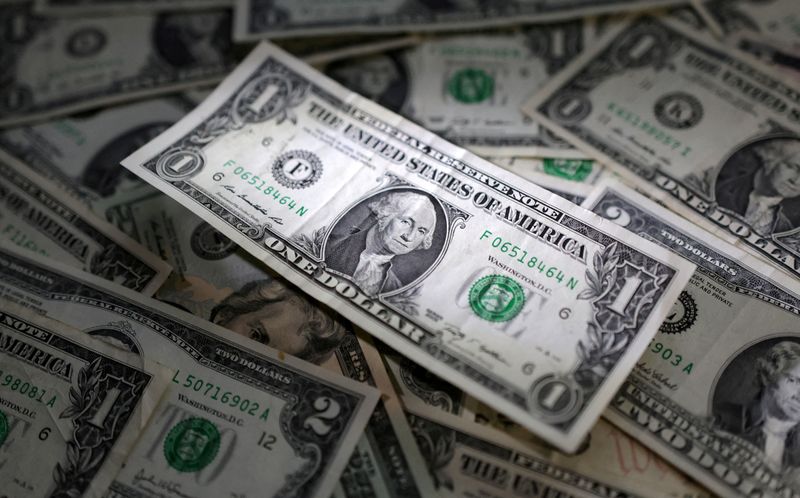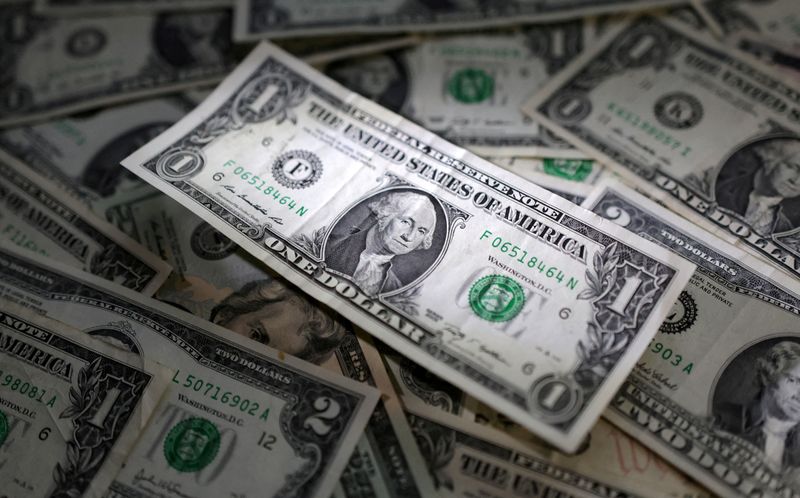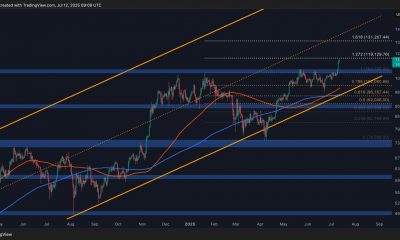Forex
Dollar little changed after CPI; China considers letting yuan weaken

By Hannah Lang and Alun John
NEW YORK/LONDON (Reuters) -The dollar was little changed on Wednesday after U.S. price data came in line with forecasts, reinforcing expectations the U.S. Federal Reserve will cut interest rates next week.
The dollar was also boosted by a Reuters report China was considering allowing a weaker currency next year, which sent the yuan and other Asian currencies lower.
The consumer price index rose 0.3% last month, the largest gain since April after advancing 0.2% for four straight months, data showed on Wednesday. Economists polled by Reuters had forecast the index would rise 0.3%.
Following the report, the likelihood of a quarter-point rate cut by the Fed on Dec. 18 rose to 96.4%, according to CME’s FedWatch tool.
“The market is as confident as possible, practically, that the Fed is still going to cut rates next week,” said Marc Chandler, chief market strategist at Bannockburn Forex in New York. “Very rarely does the Federal Reserve go against the market when such strong odds are priced in.”
The was last up 0.141% at 106.5.
Analysts said the dollar was also being affected by Reuters’ report that China’s top leaders and policymakers are considering allowing the yuan to weaken in 2025 as they brace for higher trade tariffs under a second Donald Trump presidency.
The dollar jumped against the yuan, but gave back some of its earlier gains and was last up 0.18% against the offshore unit at 7.2747.
The contemplated move reflects China’s recognition that it needs bigger economic stimulus to combat Trump’s threat of bigger tariffs, people with knowledge of the matter said, according to the report.
China is expected to hold its annual Central Economic Work Conference this week, after Monday’s Politburo meeting vowed to switch to an “appropriately loose” monetary policy to spur economic growth.
“If a currency depreciation served as a tactic to counter tariff shock, the likely escalating trade war could reinforce (U.S. dollar) exceptionalism and weigh on regional currencies,” said Ken Cheung, FX strategist at Mizuho (NYSE:).
China-exposed currencies fell, with the last down 0.25% to $0.6362 and the 0.18% lower at $0.579, after both touched on year lows after the report. Korea’s under-fire won also dipped.
Japan’s yen was in focus after Bloomberg news reported the BOJ sees “little cost” to waiting for the next rate hike.
The dollar was last 0.19% higher at 152.25 yen.
Earlier in the day the yen strengthened after data showed Japanese wholesale inflation accelerated, supporting the case for a Bank of Japan interest-rate hike next week.
“The data is leaning towards a hike,” said Bart Wakabayashi, co-branch manager at State Street (NYSE:) in Tokyo. “Put it this way: if they raise, it’s a very defendable position.”
In a busy week for monetary policy, the Bank of Canada meets later Wednesday and the European Central Bank and Swiss National Bank meet on Thursday.

Expectations Canada’s central bank will cut rates by a half point helped to pin the near a 4-1/2-year low against the greenback. One U.S. dollar last bought C$1.4174.
The euro was down 0.13% at $1.0514, while the Swiss franc was down 0.07% against the dollar at 0.8822.

 Forex3 years ago
Forex3 years agoForex Today: the dollar is gaining strength amid gloomy sentiment at the start of the Fed’s week

 Forex3 years ago
Forex3 years agoUnbiased review of Pocket Option broker

 Forex3 years ago
Forex3 years agoDollar to pound sterling exchange rate today: Pound plummeted to its lowest since 1985

 Forex3 years ago
Forex3 years agoHow is the Australian dollar doing today?

 Cryptocurrency3 years ago
Cryptocurrency3 years agoWhat happened in the crypto market – current events today

 World3 years ago
World3 years agoWhy are modern video games an art form?

 Commodities3 years ago
Commodities3 years agoCopper continues to fall in price on expectations of lower demand in China

 Economy3 years ago
Economy3 years agoCrude oil tankers double in price due to EU anti-Russian sanctions



























